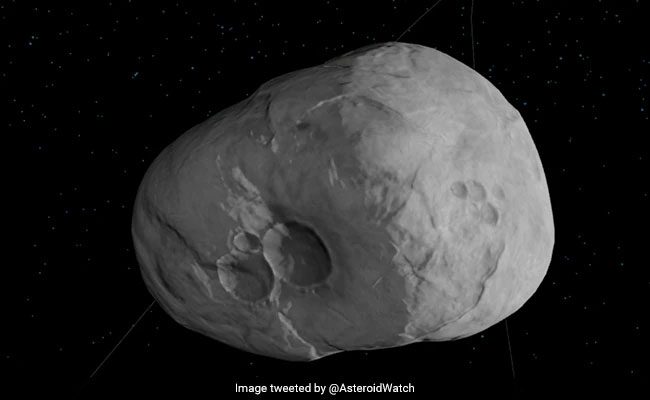NASA Announces Five Asteroids, Largest the Size of a Bus, Heading Towards Earth This Weekend. However, the closest they will come is nearly one million kilometers away.
Near-Earth asteroids always capture the attention of scientists due to their potential to cause disasters. Although most of them will burn up upon entering Earth’s atmosphere, some larger asteroids could cause significant damage.
The Jet Propulsion Laboratory (JPL) of the National Aeronautics and Space Administration (NASA) regularly monitors these asteroids. JPL recently announced a series of asteroids that will pass by Earth in the coming days.
Specifically, the NASA Asteroid Watch system, responsible for tracking asteroids, indicates that several asteroids and comets will approach Earth at relatively close distances. This system can also calculate the date of the closest encounter, the diameter, approximate size, and the distance of each asteroid from Earth.
In just two days, April 5-6, five asteroids will approach our planet, with the closest being Asteroid 2023 GE, which measures approximately the size of a bus and will come within 913,000 km of Earth.

Asteroid image captured by the AsteroidWatch system. (Photo: Twitter/NASA).
2023 FZ3 – the largest asteroid in this group, has a diameter of about 46 meters and is expected to pass by Earth on April 6. This object is hurtling towards our planet at a speed of 67,656 km/h, with the closest approach being about 4.19 million km away. However, according to NASA, this object poses no threat to Earth.
Additionally, other asteroids will approach Earth at close distances including 2023 GE with a diameter of 11 meters; 2023 FE4 with a diameter of 30 meters; 2023 FQ7 measuring 20 meters; and 2018 FD with a size of 45 meters, all making their closest approaches on April 5 and 6.
Approximately 30,000 asteroids (including over 850 that are more than 1 km wide) have been detected by NASA, which are categorized as Near-Earth Objects (NEOs). Nevertheless, all these celestial bodies are not expected to pose a threat to Earth for the next 100 years.
According to NASA, these asteroids are remnants from the formation of our Solar System. The Solar System began forming about 4.6 billion years ago when a large cloud of gas and dust collapsed. During this process, most of the material fell into the center of the cloud, forming the Sun, while some dust condensed to form the planets.
Recently, NASA’s Planetary Defense Coordination Office reported the discovery of a new asteroid nearly 50 meters in size that may collide with Earth on February 14, 2046.
While asteroid tracking information is available from various sources, the majority is collected by NASA-funded observatories such as Pan-STARRS, Catalina Sky Survey, and the NEOWISE mission.
The Sentry impact monitoring system, located at the Near-Earth Object Program, conducts continuous and extensive assessments of the orbits of hazardous asteroids over the long term.




















































